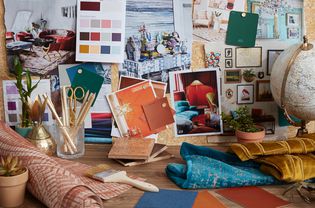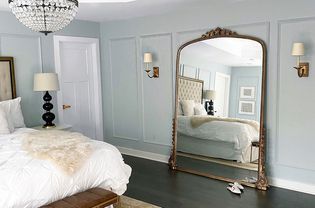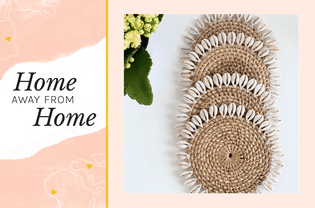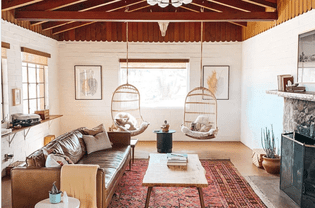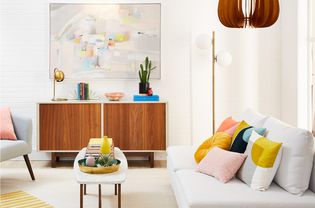Curious about incorporating vintage pieces into your home but don't know quite where to begin? This guide is for you. Here, we cover the nuts and bolts of what exactly makes a piece vintage; then, experts break down the best places to score amazing secondhand pieces, share tips on key features to look for when vintage shopping, and provide guidance on how you can successfully incorporate your finds into your home.
What Is a Vintage Piece?
By definition, a piece of furniture must be at least 20 years old to be considered vintage. Vintage furniture is reflective of a certain period in time (so, yes, one day the ubiquitous box-compartment IKEA Kallax shelf everyone had in their apartment circa 2010 may very well be considered a vintage piece!).
No matter whether your style leans boho, grandmillennial, or shabby chic, you'll be able to find vintage pieces that speak to you thanks to our experts' insight.
:max_bytes(150000):strip_icc()/ATLQgrWw-a7b3d51475da4579897a5d0f32886b2e.jpeg)
Lauren Zillinger for Laura Metzler Photo
Where to Get Started
Vintage stores are often bursting with inventory, which can be both appreciated and overwhelming, depending where you are on your vintage shopping journey. Those who are new to the vintage world may wish to take a cue from rooms and professionals they admire to help determine the types of items that they appreciate most. "Find images from designers and artists that incorporate vintage elements and let that guide your inspiration," Not All Beige's Molly Blankenship suggests.
When it comes to determining the best shopping resources, think beyond common resale websites and neighborhood thrift stores, Anna Weaver of Anna Weaver Interiors advises. "Explore auctions, home consignment stores, estate sales, antique malls, Instagram sellers—the internet has made locating these sources so much easier," she says. "And go slow, take your time discovering your favorite secondhand haunts."
:max_bytes(150000):strip_icc()/5B8BE71F-4E6A-4395-B338-A6EB061106CF-53910ab82ef94d118673a6174e08f4f8.jpg)
Characteristics to Keep In Mind
If you're used to primarily purchasing brand new furnishings, shopping vintage may require a bit of a change in mindset at first, but focusing less on perfection and more on a piece's bones will prove key.
And in that vein, vintage pieces can often be extremely well made and incorporate materials that are less commonly used in today's furniture construction—Weaver particularly appreciates inlaid wood, for example. "The best part about decorating with vintage and secondhand is that usually a very high quality item has an accessible price," she says. "So with patience and time, you can be picky and find beautiful pieces that are affordable."
Note that when it comes to purchasing vintage pieces, a bit of a weathered look can be welcome. "The best vintage and antique pieces have wear, patina, and characteristics that show a life lived," Blankenship explains. "You certainly don’t want a piece that is falling apart, but scratching and imperfections can add beauty to a piece."
Vintage enthusiasts also enjoy searching for pieces that tell a story, as MOB Vintage owner Mike O'Bryant says. "My home is kind of like a fun museum," he adds. "It keeps my friends always wanting to learn something new when they come by!" Weaver agrees. "My absolute favorite part of decorating with vintage is that usually each piece comes with a story and by adopting a treasure, I will be adding to the story."
:max_bytes(150000):strip_icc()/DSC_0410-b4bdbd44dca04b24b2305a0734187308.jpg)
How to Style Vintage Pieces In Your Home
Once you have selected your ideal pieces, the key is not to over-style them in your home, Blankenship explains. "Vintage style to me is letting a piece speak for itself," she says. Whether it is a table, chest, or chairs, you really don’t need to add elements to make them stand out. Keeping it simple is best!"
And don't worry about finding a permanent place for an item right away—or ever! Many vintage pieces can easily adapt to new spaces, you just have to be creative. "For me, an oversized vintage brass lamp is the equivalent of a little black dress," Capitol Vintage Charm's Stacy Harvie explains. "By changing the shade as it rotates rooms in your home, it can be a basic lamp you keep forever. And if it is oversized enough, between the shade and the shine of the brass, it can often make a statement standing alone without other items needed on the table."
If a piece truly does need a bit of TLC, don't be threatened, Weaver says. "There is such an opportunity to bring pieces back to life," she adds. "It can be repaired, and if you don’t have the energy to do it yourself, then it feels good to find a local business who can do it for you. Chances are you’ll still come out saving money."
:max_bytes(150000):strip_icc()/FullSizeRender1-21a95cec06cd4ac8b0c1d88ee8fb292a.jpg)
Love a furniture item you scored but don't see how it will fully mesh with your lifestyle? Go ahead and think outside the box a bit. Thrills of the Hunt's Jess Ziomek encourages vintage shoppers to be imaginative when incorporating a find into their space. "It's okay to think beyond a vintage piece's original intended purpose," she says. "There's no reason why a former armoire can't become your bar, why drapes can't become a bed canopy, or why your bar cart can't hold your record player and vinyl." And it's more than okay to place multiple vintage finds in the same room or incorporate them into one vignette, she notes. "Don't be afraid to mix and match. The most refreshing interiors that exude personality have layers of vintage pieces from different periods, geographical regions, and styles."

:max_bytes(150000):strip_icc()/ScreenShot2021-06-21at3.41.02PM-b8bb72b467754844a28c09f9c63f9a98.png)

